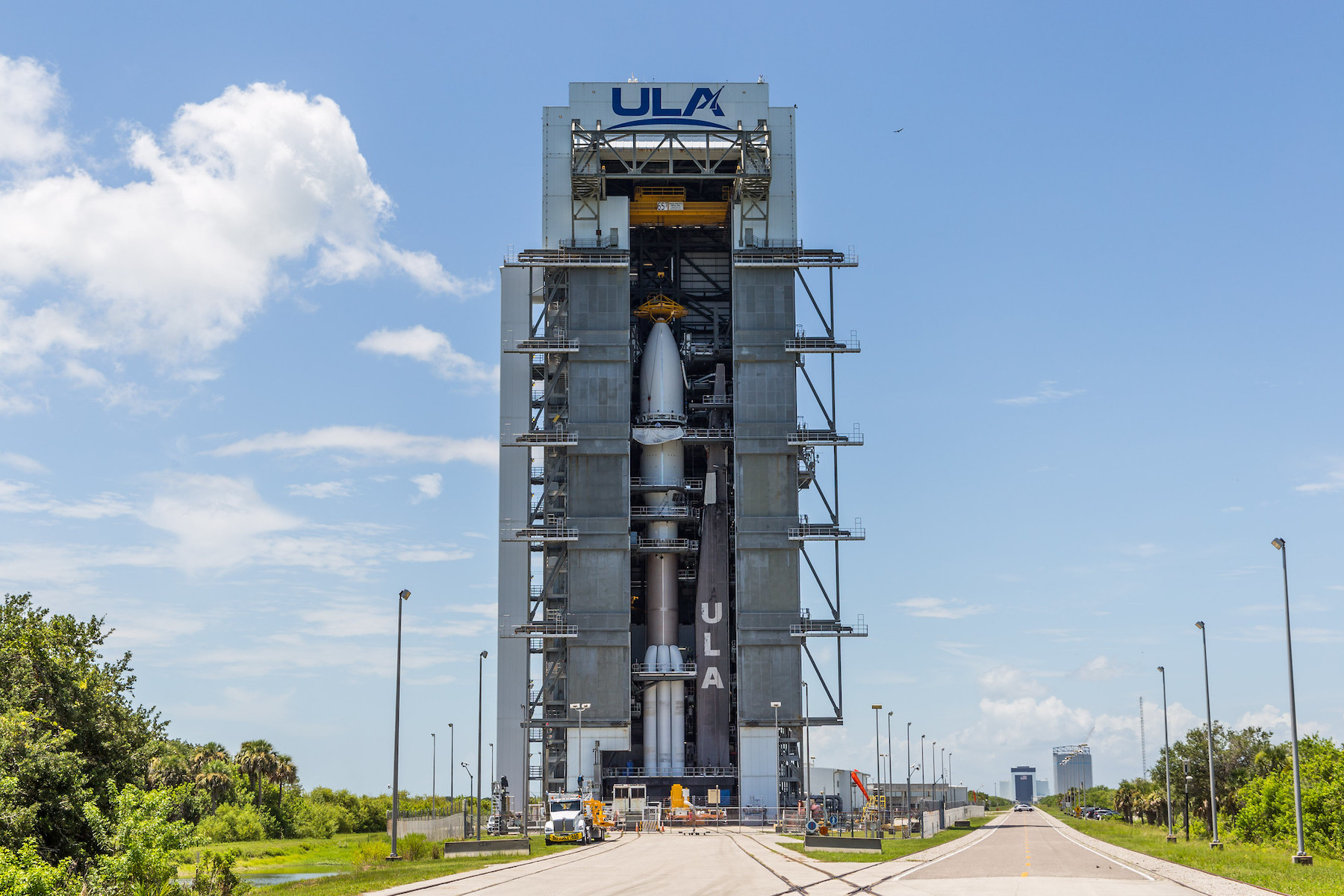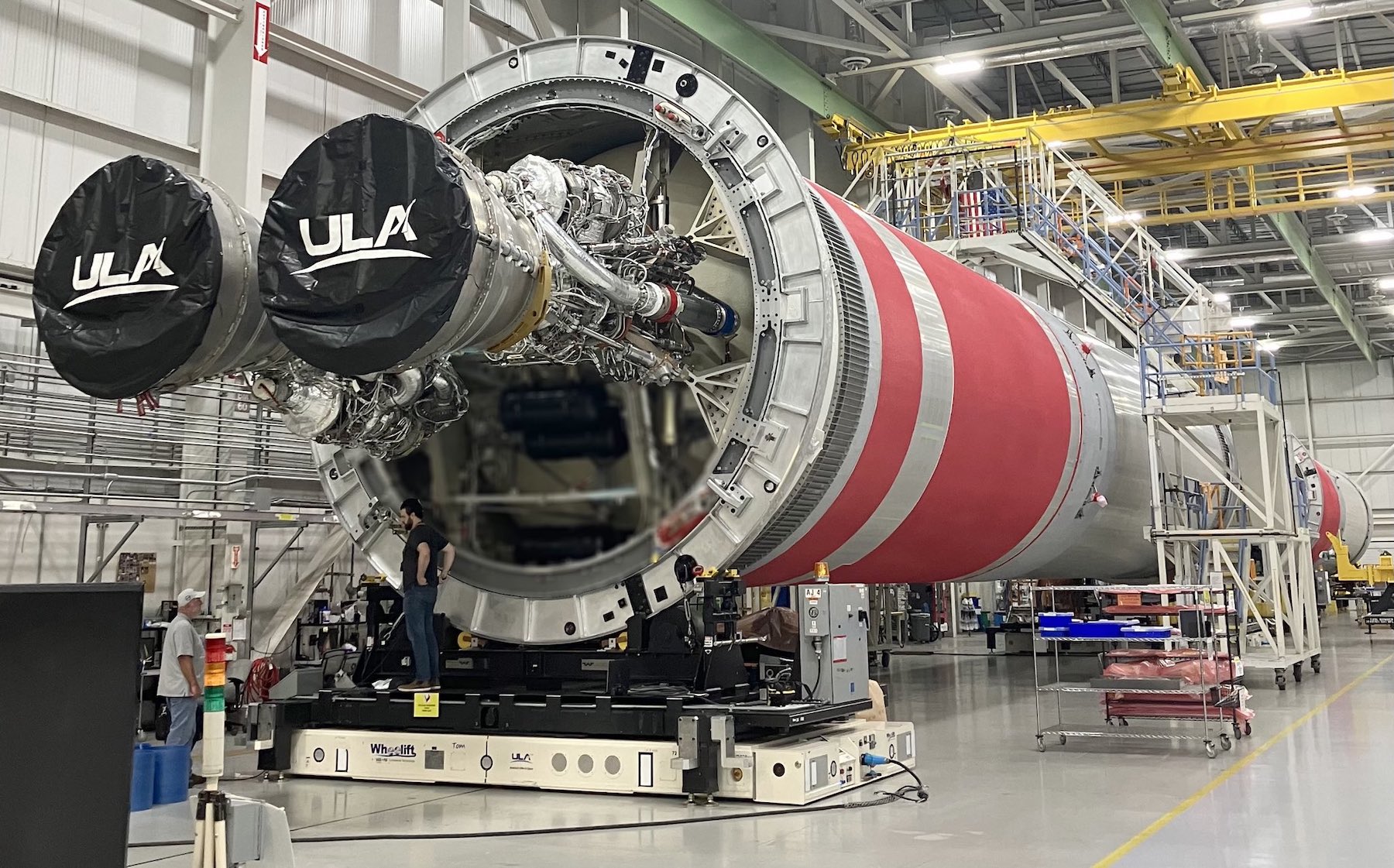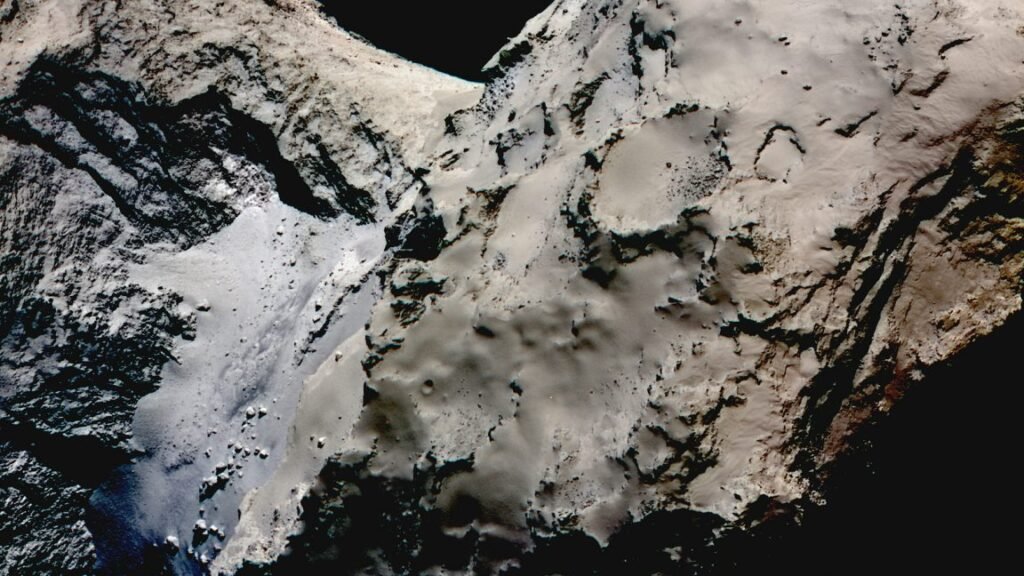
Credit:
United Launch Alliance
In June, ULA delivered the second Vulcan rocket to Cape Canaveral from its factory in Alabama to undergo final processing before stacking it on a mobile launch platform next month. One thing that must happen before then is the next launch of ULA’s current workhorse rocket, the Atlas V, slated for July 30.
The Atlas V is fully stacked inside ULA’s Vertical Integration Facility at Cape Canaveral and will roll out of the hangar to the launch pad a couple of days before liftoff. This is one of 16 Atlas V rockets left in ULA’s inventory. Bruno said ULA is on track to finish manufacturing the remaining Atlas V rockets by the end of this year, allowing the company to convert floor space in its rocket factory to ramp up production of Vulcan launch vehicles.
Once the Atlas V is off the ground later this month, the hangar will be clear to allow ULA to begin assembling pieces of the second Vulcan rocket. Ground teams plan to conduct a countdown rehearsal in August, during which the launch team will load liquid methane, liquid hydrogen, and liquid oxygen propellants into the Vulcan rocket.
For subsequent Vulcan flights, ULA won’t need to perform the countdown rehearsal, Bruno told reporters last month.

Credit:
United Launch Alliance
Most of the remaining Atlas V rockets are assigned to missions for Amazon’s Project Kuiper broadband constellation and astronaut missions on Boeing’s Starliner spacecraft. The Atlas V flight scheduled for July 30 will be the last Atlas V to launch a mission for the US Space Force. It will also be ULA’s 100th national security mission overall since the company’s founding in 2006 with the merger of the legacy launch businesses of Boeing and Lockheed Martin.
US military and intelligence agencies have been the primary customers for ULA, which operated the Delta IV and Atlas V rockets until the Delta IV’s retirement earlier this year.
If all goes according to plan, ULA could be in a position to launch its 101st national security mission by the end of the year using a Vulcan rocket. This mission, designated USSF-106, will launch an experimental demonstration satellite into a near-geosynchronous orbit for the Air Force Research Laboratory to test next-generation satellite navigation technologies.




